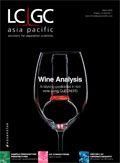Column Selection for Reversed-Phase HPLC
With so many HPLC columns on the market we present a simple guide to what's important when making your stationary phase and column dimension choices.
An excerpt from LCGC's e-learning tutorial on column selection for RP-HPLC at CHROMacademy.com
There are many factors that influence the performance of a high performance liquid chromatography (HPLC) stationary phase, of which the chemical nature of the bonded phase ligand is important, but by no means all encompassing. Minor manufacturing parameters such as the method of electropolishing the internal surface of the column can also have an effect on the selectivity and efficiency produced by a particular column.
Few of us have time to study each individual parameter (of which there are hundreds) and assess their interactive effects on the selectivity of our stationary phases. We need readily accessible measures of column performance to identify similar or orthogonal chemistries to those we are currently using, or to gain an insight into which column types might work for particular applications.
Several attempts have been made to produce a "definitive" set of chemical probes to best characterize the huge number of stationary phases available (well over 1000 different types are currently available). As yet a harmonized set of test probes and methodologies has not been identified, however three, independent, publicly available databases of HPLC columns exist today:
- ACD Labs Column Selection Database — based on the early work of Tanaka and developed by Euerby and Peterson (1–4), http://www.acdlabs.com/products/adh/chrom/chromproc/index.php#colsel
- United States Pharmacopeial Convention (USP) database — based on test probes established using a National Institute of Standards and Technology (NIST) Standard Reference material, http://www.usp.org/USPNF/columnsDB.html
- The Impurities Working Group of the Product Quality Research Institute (PQRI) Drug Substance Technical Committee — uses probes based on the hydrophobic subtraction model of Dolan, Snyder and Carr (a useful accompanying illustration from reference 1 is shown in Figure 1) (5–8), http://www.usp.org/USPNF/columnsDB.html

Figure 1: Schematic representations of the five interactions described by the hydrophobic subtraction model (adapted from reference 5).
The PQRI database is the best populated, with 588 columns, and is a very useful tool to aid HPLC column selection. A description of the Tanaka test probes is given below to help understand the various classifications, with the analogous PQRI test probes indicated in parentheses. It should be noted that the PQRI classification uses different chemical probes to the Tanaka (now ACD) database but the results describe a similar chemical behaviour.
- Retention factor, kPB (not tested in the PQRI Classification), describes the hydrophobic retention demonstrated by the column measured using the retention of pentylbenzene.
- Hydrophobic selectivity, αCH2 (H), the retention factor ratio (selectivity) between pentylbenzene and butylbenzene reflects the ability of the phase to separate compounds that differ by only a single methylene group. Column hydrophobicity (H) increases with an increase in total carbon. Endcapping, because of its low (<10%) contribution to the overall carbon load has little effect on retentivity.
- Shape selectivity, αT/0 (S*), describes the ability of the phase to discriminate between planar structures (triphenylene) and those with greater spatial (hydrodynamic) volume (o-terphenyl). Column steric interactions increase as the bonded phase ligands move closer together on the silica surface (increased bonded phase chain length or concentration of the bonded phase) and for packings with narrow pore sizes, and has a significant effect on column selectivity, especially for molecules of different shapes.
- Hydrogen bonding capacity, αC/P (A and B), is a measure of the retention factor ratio (selectivity) between caffeine and phenol and describes the columns ability to hydrogen bond with a solute. The PQRI database further characterizes hydrogen bonding capacity into hydrogen-bond acidity (A), the ability for non-ionized silanols to interact with bases and hydrogen bond basicity (B), the ability for surface and bonded-phase species to further interact with acidic analyte features.
- Total ion-exchange capacity, αB/P pH 7.6 (C 7.6), is the selectivity between benzylamine and phenol at a mobile phase pH of 7.6 and reflects the total silanol activity of the column, affecting peak shape and selectivity for polar and ionizable analytes.
- Acidic ion-exchange capacity, αB/P pH 2.7 (C 2.7), is measured using the retention factor ratio between benzylamine and phenol at pH 2.7 and reflects the likelihood of peak tailing when analysing bases at low eluent pH. The magnitude of the difference between ion-exchange tests indicates the ability to discriminate between polar analytes while maintaining good peak shape.
Most of these groups have used chemometric approaches to produce quantitative comparisons between column characteristics based on principal component analysis (PCA) or tools to visualize the relative groupings of commercially available columns according to their key descriptors.
References
References available in the on-line edition: www.chromatographyonline.com/Essentials0313

New Method Explored for the Detection of CECs in Crops Irrigated with Contaminated Water
April 30th 2025This new study presents a validated QuEChERS–LC-MS/MS method for detecting eight persistent, mobile, and toxic substances in escarole, tomatoes, and tomato leaves irrigated with contaminated water.

.png&w=3840&q=75)

.png&w=3840&q=75)



.png&w=3840&q=75)



.png&w=3840&q=75)









